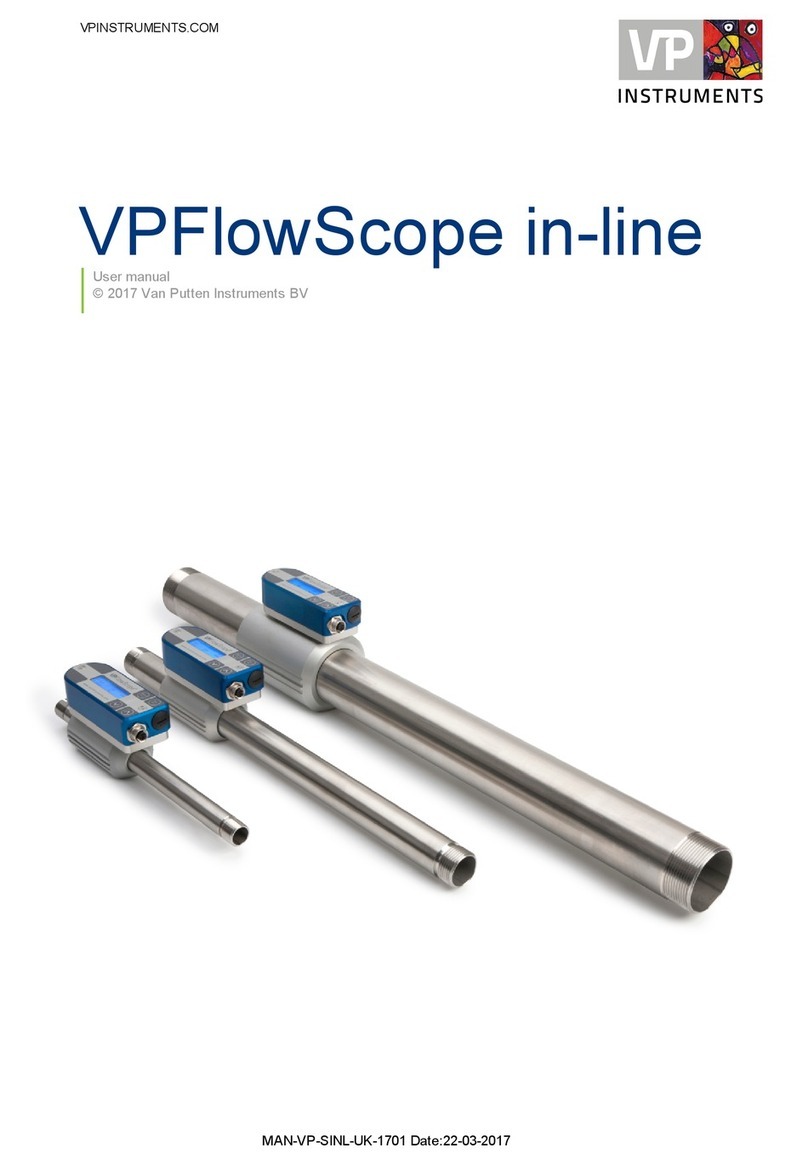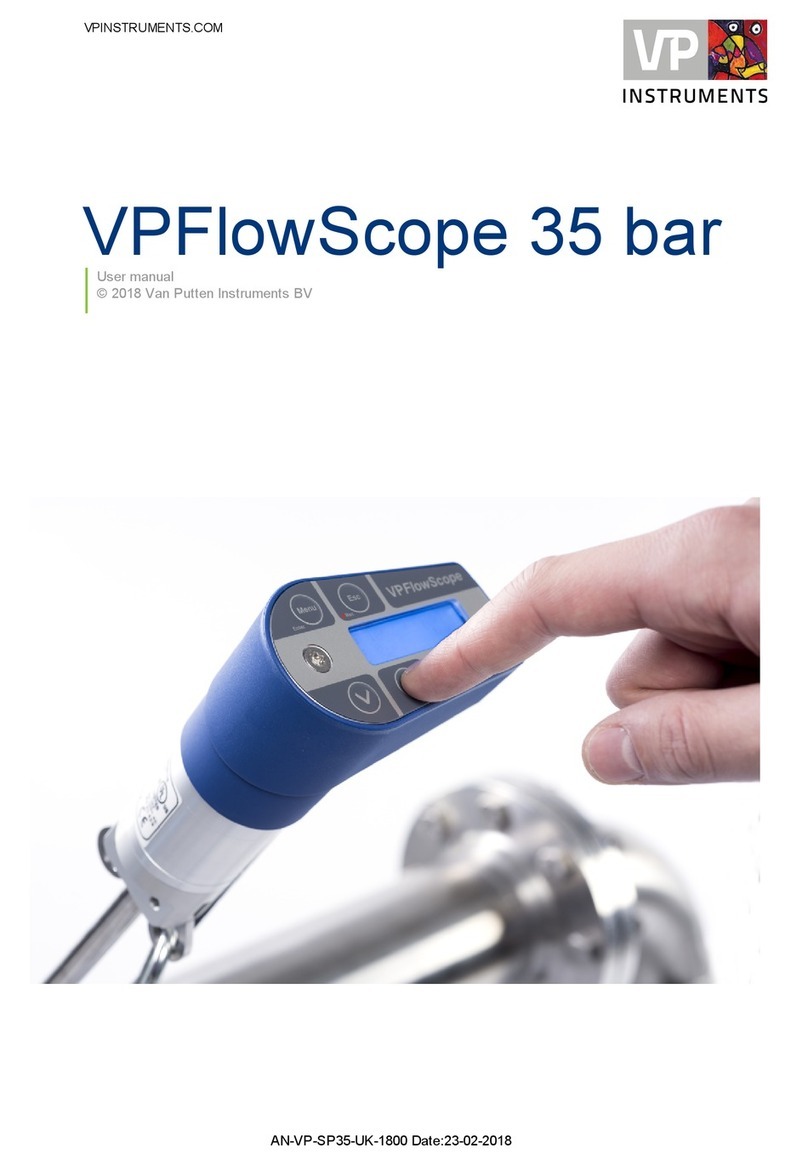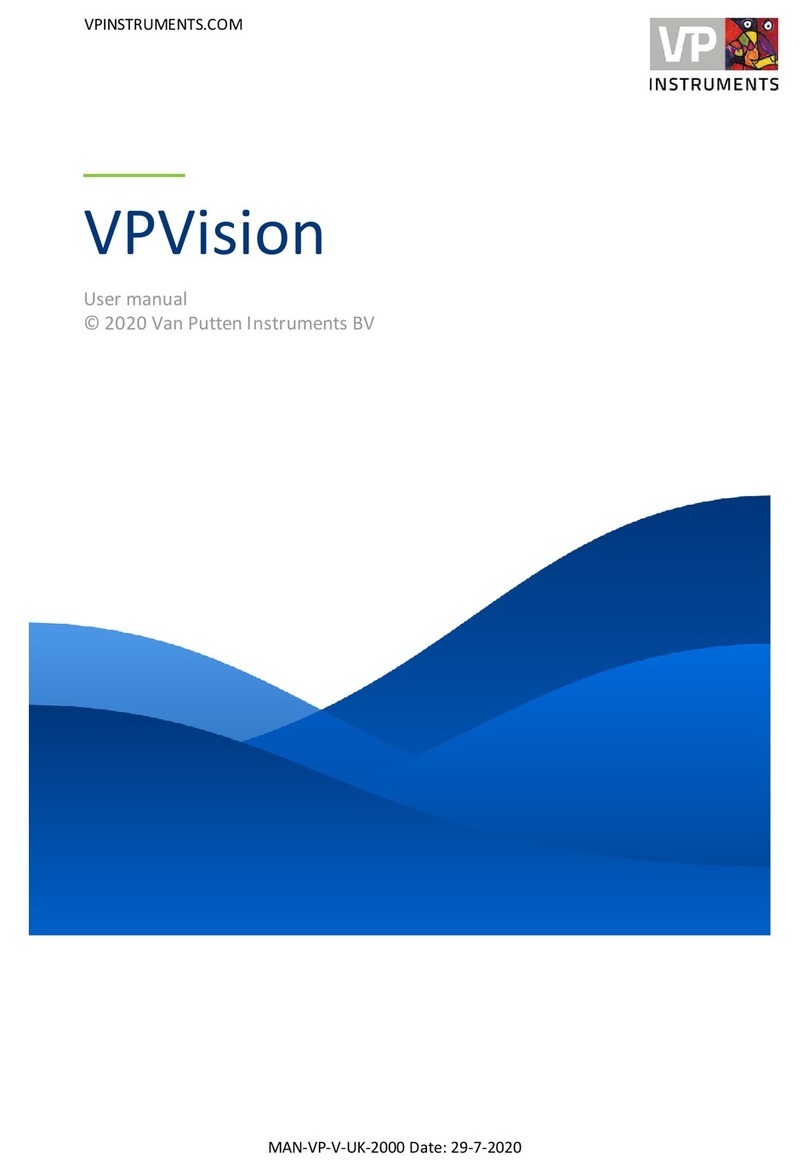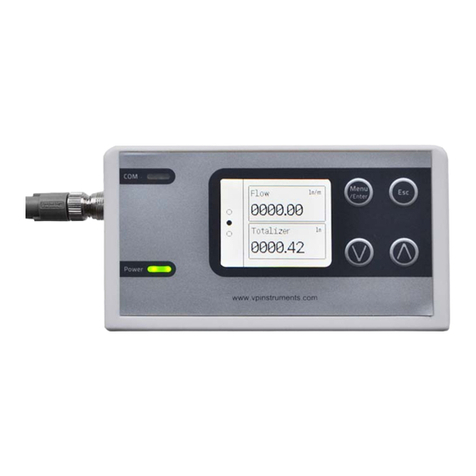
VPFlowScope M probe10
© 2016 Van Putten Instruments BV | MAN-VP-SMPR-UK | Revision:1600 | Date:23-03-2016
4 Quick start
This chapter contains the basic steps to start using your VPFlowScope M probe flow meter.
Additional information on all subjects can be found in the next chapters.
1. Unpack
Unpack the meter and check if all items are there and in good shape. A check list with all items is
available on the box.
2. Apply power and communication
Connect the unit to a DC power source (12..24 VDC).
3. Mechanical installation
See chapter 6 mechanical installation for more detailed information
Find the best point of installation for this product. Make sure that the process conditions are within
the specifications of the flow meter
For installation of the VPFlowScope M probe, an insertion point needs to be created. You can weld
a socket with internal 1/2 inch thread or use a hot tap saddle
A ball valve with a minimum size of 0,5 inch female BSP or NPT process connection should be in
place
Assemble the VPFlowScope M including safety system and mount it on top of the ball valve
Open the valve and insert the probe
The sensor needs to be in the middle of the pipe for diameters larger then 2 inch. See chapter 6.1
installation point
Tighten the compression fitting according to instruction.
Pull on the safety chain to strain it and turn the safety lock clockwise to lock it
4. Electrical installation
4.1 Permanent installation
Connect a cable with 5 Pin M12 connector to the VPFlowScope M probe. The cable can be
connected to VPVision, a central data acquisition / building management system or data logger
via Modbus RTU (TCP), 4..20mA or pulse. Connect the 4 Pin M12 connector to the
VPFlowScope M probe and the other side to a laptop or router for an Ethernet connection. See
chapter 10 electrical connections for more information.
Apply 12..24 VDC to power up the device. Use a Class II power supply (less than 2 Amps). If a
display is available, it will light up when power is applied.
4.2 Temporary installation
Use a 12 Volt power supply with M12 connector to power the VPFlowScope M probe. This quick
method is ideal for audits.
5. Configure the VPFlowScope M
For correct measurement, the diameter should be programmed into the instrument.
The quickest way: Program the inner pipe diameter needs via the display
Alternative method: The diameter can also be programmed by Ethernet (using the web server) or
with the VPStudio 2.0 software
Advanced settings: Use the built in web server or VPStudio to set the output parameters for
networking, Modbus, pulse, alarm and current outputs
6. Data recording
If the data logger option is available, it will automatically start recording when the power is supplied
and when a VPSensorCartridge is connected. The data logger will record data of every parameter
with an interval of 1 second. The data logger can also be put in start/stop mode. Changing this
setting can be done using the display or with the VPStudio 2.0 software.
































